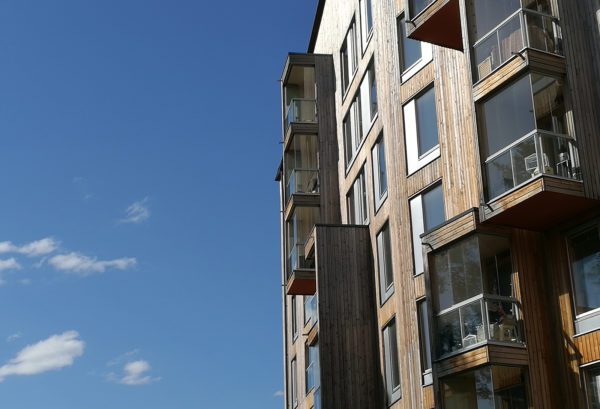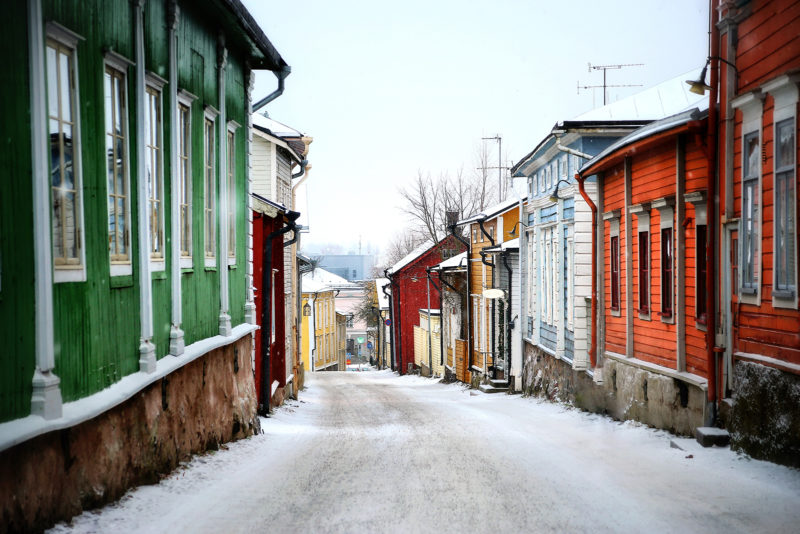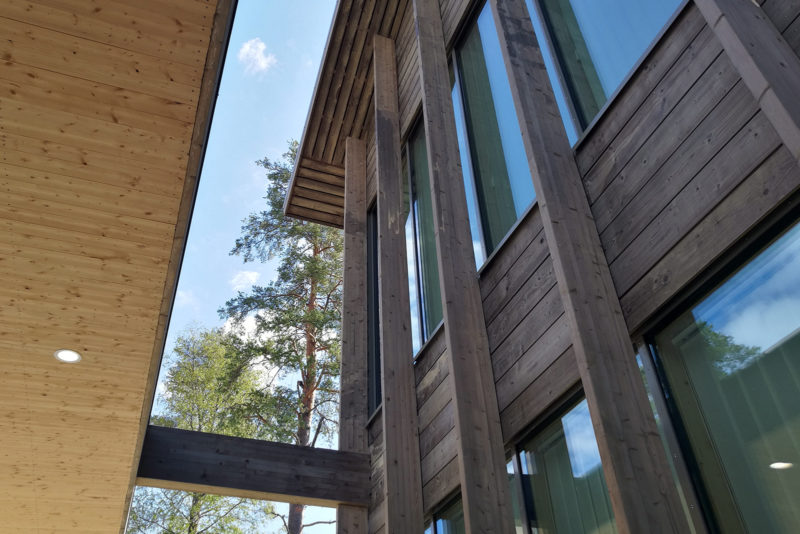Building with wood in urban areas could offset almost half the carbon emissions of Europe’s cement industry

Carbon storages in towns could be increased by using more wood in both new construction and renovation. In Europe alone, the total area of new dwellings is 190 million square metres a year, and most of them are built in towns and cities.
Built environment is the source of one third of the greenhouse gas emissions globally. A recent Finnish study reveals, however, that in Europe alone, new buildings could sequester 55 million tonnes of carbon dioxide per year, if their structures, cladding, surfaces and furnishings were made of wood.
This corresponds to 47 percent of the current annual emissions of Europe’s cement industry. The study finds that to achieve this carbon storage, 80 percent of all new dwellings in Europe should be constructed of wood.
The findings of the study, conducted by the Aalto University and the Finnish Environment Institute, are based on 50 case studies reported in writing from all parts of the world, from the US to China and Europe. Thus, they provide a broad overview of the potential of wood in the construction industry.
The case studies were split into three categories depending on the amount of wood used in the buildings and the amount of carbon they could sequester. In the low category the carbon storage was 100 kilograms per square metre, in the medium category 200 kilograms, and in the high category 300 kilograms.

To achieve the goal the researchers propose a 20-year plan involving a gradual move to buildings that sequester 300 kg/m2 of carbon dioxide. The plan would thus focus on constructing wooden buildings that sequester the most carbon, and by 2040, thanks to the use of wood, emissions from the cement industry would be cut by almost half.
Sustainability must be ensured
The researchers stress that only wood that is produced sustainably should be used in construction. To ensure this, they recommend the use of certified wood. International forest certification systems include PEFC and FSC, among others.
One of the things guaranteed by certification is that the wood comes from sustainably managed forests where forest regeneration and biodiversity are looked after.
’If fellings are increased, we must also increase forest planting, in order to safeguard the carbon sinks in forests,’ says Dr. Juudit Ottelin, a member of the researcher team.
Doctoral student Ali Amiri points out that if the wood used in buildings is derived from sustainable sources, wood construction will cause no worries as regards climate.
The study by Amiri, Ottelin and the rest of the team confirms that in ageing forests, the carbon dioxide emissions from the forest begin to be equal to the amount of carbon sequestered in the forest during its growth.
Carbon storages in wooden buildings reduce carbon dioxide emission in both the short and the long run. Using wood in construction also has many advantages over cement and steel, since these two materials cause emissions when being made, due to the chemical reactions involved in their manufacturing processes.

Renovation is also worthwhile
In Finland, 90 percent of one-family homes are made of wood. In recent years wood construction has also gained ground in larger projects, both public and private.
In Imatra, near the eastern border of Finland, schoolchildren were recently welcomed to the largest wooden school in Finland. Many other schools and day-care centres are also being constructed of wood throughout the country. This is because, in addition to being climate-friendly, studies have found wood to be a healthy construction material.
In France, all new public buildings must be made at least 50 procent from wood or other sustainable materials from 2022, Global Construction review wrote in February. Paris has pledged any buildings higher than eight storeys built for the 2024 Paris Olympics must be made entirely of timber.
One factor that increases the climate-friendliness of wood construction and the renovation of older wooden buildings is that in growing towns, the life span of wooden buildings can be 100 years or more. Throughout their lives these buildings function as carbon storages.
To take an example, the wooden parts of a 100-m2 detached house bind about 30 tonnes of carbon dioxide. An average motorist would take over ten years to cause the same amount of emissions.

Wood is environmentally superior in construction not just to cement, but also to steel, which also causes considerable emissions, among other things because its manufacturing requires plenty of energy.
’Still, it’s good to bear in mind that the actual construction phase is not carbon-neutral, even when using wood. The processing, manufacturing and transport of the materials do cause emissions,’ says Juudit Ottelin.
Wooden buildings are safe
The safety standards of wood construction are extremely strict. Amiri notes that the fire safety regulations applied to wood construction are stricter than others. Moreover, the processes of designing wooden buildings are continuously being developed to improve fire safety.
’The main thing is to convince the decision-makers that multi-storey wooden buildings, in particular, are safe to construct,’ says Amiri.
If the environmental certificates for buildings, such as Leed or Breeam, were to award extra points for using wood, wood construction might become more attractive. In recent decades, Europe has succeeded in keeping its forested area more or less stable. Amiri thinks that the European countries where wood construction is popular could actually propose drawing up a new, green construction certificate.
’If there is enough support and awareness of the advantages of building with wood, wood might become the principal material of construction,’ Amiri sums up.
